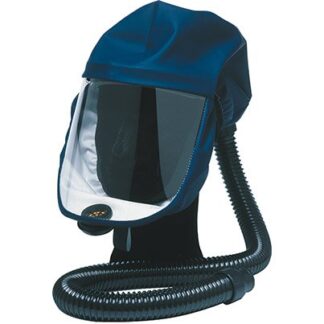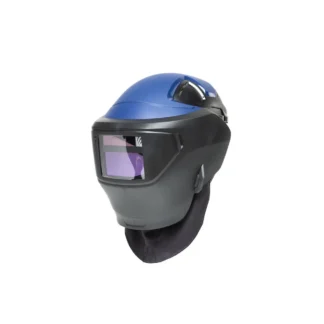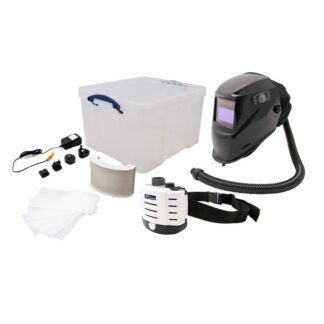Following our recent blog on Asbestos Protection, we thought it would be important to address another significant hazard faced by construction workers: silica dust. After asbestos, silica dust is considered one of the most serious health risks in the construction industry. In fact, the Health and Safety Executive (HSE) reported that silica exposure was responsible for over 500 deaths among construction workers in 2005 alone.
In this post, we aim to raise awareness about silica dust and provide guidance on how workers can protect themselves from this potentially fatal hazard.
What is silica?
Silica is a naturally occurring mineral found in various materials such as rocks, sand, and clay. Construction materials such as bricks, tiles, and concrete often contain high concentrations of respirable crystalline silica (RCS). When these materials are cut, drilled, or otherwise disturbed, they release fine silica particles into the air.
These dust particles are so small that they can be easily inhaled, penetrating deep into the lungs and becoming embedded in the lung tissue. Over time, exposure to these particles can lead to life-threatening health conditions. Alarmingly, silica dust particles can remain airborne for up to 12 hours and are approximately 100 times smaller than a grain of sand.
Where is silica found?
Silica is present in a wide range of industries, with construction being the most at risk. Other industries that may expose workers to silica dust include:
- Manufacturing (especially involving glass, ceramics, and stone products)
- Agriculture (where soil and rock disturbance occur)
- Mining and Quarrying
Due to the size of silica particles, health complications often develop slowly over the years, making early detection difficult. In many cases, by the time symptoms manifest, the damage may already be irreversible.
Health risks: what is Silicosis?
One of the most serious conditions associated with prolonged silica exposure is Silicosis, a progressive and often fatal lung disease caused by inhaling RCS over time. Similar to Asbestosis, Silicosis results in scarring of lung tissue, which impairs lung function. It is part of a group of diseases known as occupational lung diseases and may contribute to:
- Chronic Obstructive Pulmonary Disease (COPD): This group includes conditions like Emphysema and Chronic Bronchitis, which make it difficult to breathe.
- Lung Cancer: In severe cases, prolonged exposure can increase the risk of developing Lung Cancer, particularly when compounded with other risk factors like smoking.
Symptoms of Silicosis include persistent coughing, shortness of breath, chest pain, fatigue, and weakness. Unfortunately, there is no cure for Silicosis, although early detection and medical management can help reduce symptoms.
Regulatory and legal responsibilities
Employers in industries with potential silica dust exposure are legally obligated to manage health risks and protect their workers. Here’s a summary of key responsibilities:
1. Risk Assessment
Employers must conduct thorough risk assessments in workplaces where workers are exposed to silica dust. The goal is to identify tasks that pose a risk and to quantify the potential exposure levels.
2. Control Measures
Once risks are identified, employers should implement control measures to reduce exposure. This can involve substituting materials with safer alternatives, using water suppression methods to reduce airborne dust, or improving ventilation.
3. Training
Workers exposed to silica dust must receive appropriate training on the hazards and the steps required to minimise exposure. This training should be documented for future reference, particularly in case of any silica-related claims.
4. Workplace Exposure Limits (WEL)
Employers must adhere to Workplace Exposure Limits (WEL) for silica dust. According to the CDC and OSHA, under the “Respirable Crystalline Silica Rule, employers are responsible for ensuring workers are protected from silica. This includes controlling dust levels below the permissible exposure limit (PEL) of 50 µg/m3 (micrograms of silica per cubic meter of air) as an 8-hour time-weighted average. A PEL is the maximum daily concentration that workers can be exposed to for a working lifetime without adverse health effects.”
Respiratory Protective Equipment (RPE)
While Respiratory Protective Equipment (RPE) can significantly reduce the amount of silica dust inhaled, it cannot completely eliminate the risk. For maximum protection, RPE should always be used in conjunction with other control measures such as ventilation or dust suppression techniques.
When selecting RPE, it’s crucial that the equipment is properly fitted to the user. A face fit test should be conducted to ensure a tight seal, as even small leaks can reduce the equipment’s effectiveness. This should also be accompanied by filters. In addition to wearing RPE, workers should avoid taking contaminated clothing home. Disposable clothing is recommended, and a shower should be taken before leaving work to reduce contamination risks.
Silica dust poses a serious risk to workers in various industries, particularly construction. Awareness, proper training, and strict adherence to safety regulations can help minimise the risks and protect workers from the harmful effects of silica exposure. By understanding the dangers and implementing protective measures, employers can ensure a safer working environment and prevent long-term health issues.
Silica dust protection at Dust Masks Direct
We offer a range of PPE designed to protect against silica dust exposure, including P3 face-fitted disposable masks that ensure a secure fit, preventing any gaps where silica particles could pass through. Reusable half and full-face respirators are also effective when equipped with P3 particle filters. Powered respirators with TH2, TH3, and P3 particle filters provide additional protection. It is essential to regularly inspect the condition of your filters and replace them according to the product guidelines to maintain optimal safety.
In addition to respiratory protection, we recommend wearing Type 5/6 coveralls, wrap-around safety goggles, vinyl gloves, and over-boots or overshoes to ensure comprehensive skin protection.
For further guidance or to discuss the best PPE options tailored to your specific needs, please call us at 01842 765 634, and a member of our team will be happy to assist you.




